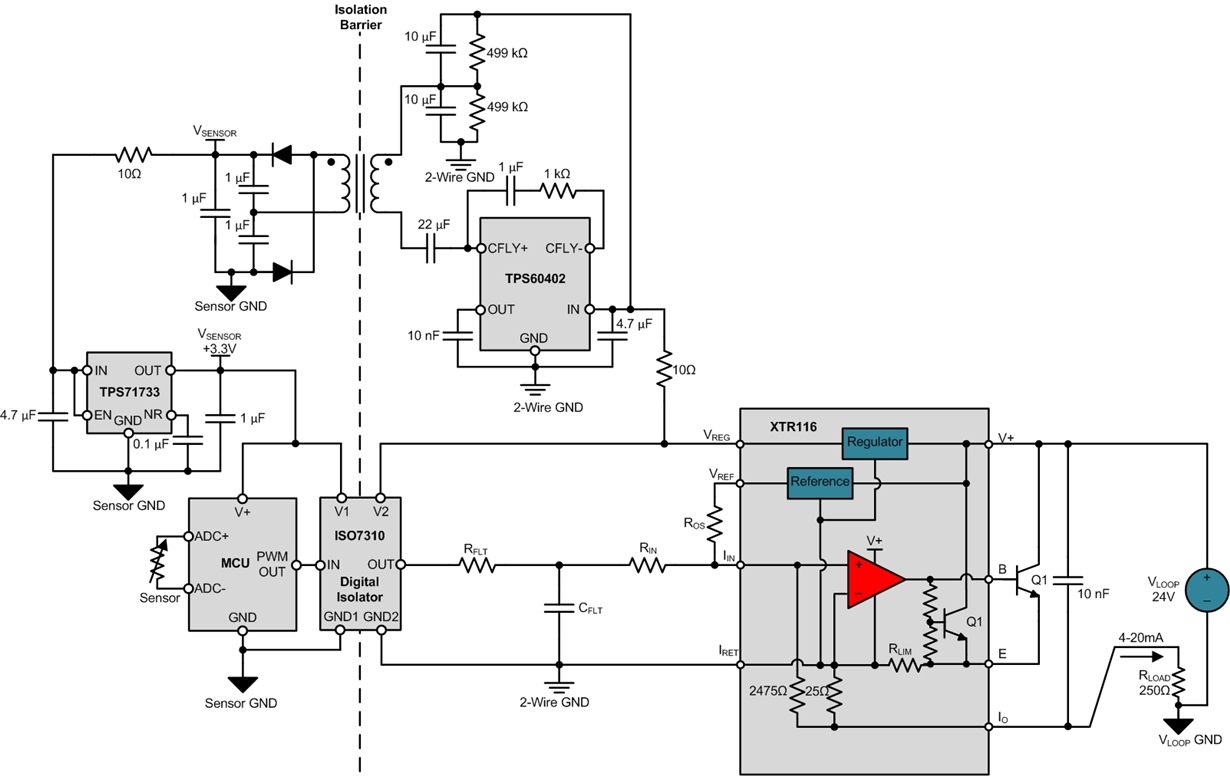Other Parts Discussed in Thread: XTR116,
Dear sir,
We built the circuit as Figure 4: Input-sensor-isolated 2-wire transmitter from following link
e2e.ti.com/.../2-wire-4-20ma-sensor-transmitters-background-and-common-issues-part-5
But we are facing following issue.
when we check 4 to 20 mA output, we find 12 mA by default instead of 4 mA.
But when we disconnect input supply of TPS60402, default output is 4 mA. But we need this output by supplying to TPS60402.
How to fix this issue ?
following is the sch. for reference.
regards,



